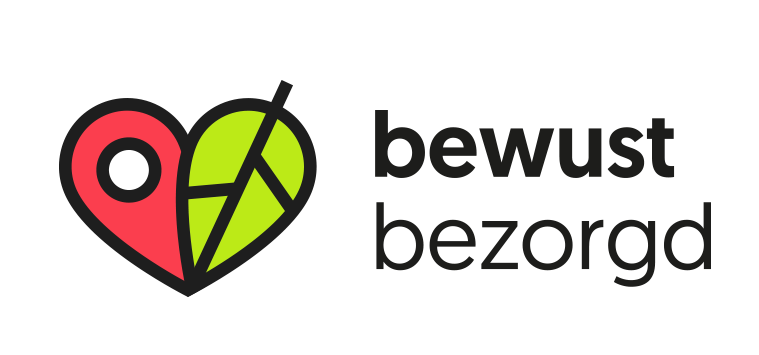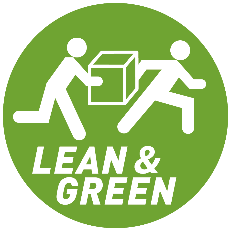Geplaatst op 24 januari 2018
Web shops and carriers are joining forces to make parcel delivery even more sustainable. The e-commerce sector targets a 50% reduction in CO₂ emissions by 2025 in the logistics operation compared to current emissions. In order to measure the CO₂ impact of parcel delivery, Thuiswinkel.org, Connekt and Top Sector Logistics have developed a calculation model in collaboration with webshops and carriers that meets European standards. The consumer is also made aware of the impact of the different delivery options with the Bewust Bezorgd (conscious delivery) campaign.
Contribution to Factor 6
The calculation model allows webshops and carriers to gain insight into the CO₂ impact of their logistics operation. This way they can immediately see what they need to do to make the logistics operation more sustainable and, in doing so, make an important contribution to the big challenge facing the logistics sector in the Netherlands: productivity improvement by a factor of 6 before 2050.
Measures must be taken now
“I think this is a great initiative of the Top Sector Logistics and the companies that are collaborating in this,” says Secretary of State for Infrastructure and Water Management Stientje van Veldhoven. “It provides the consumer with the tools to make an environmentally conscious choice when ordering. This initiative is a good example of the environmental benefits that can be achieved with city logistics because knowledge is a valuable asset. It’s good that the sector is focusing its aim on this.”
Top Sector Logistics and Connekt calculation model – background
The Top Sector Logistics wants not only to strengthen the international competitiveness of the Netherlands but also to contribute to other social goals such as sustainability and accessibility. One of the instruments that the Top Sector has developed in collaboration with Connekt for this purpose is Lean & Green Analytics: a new way of analysing CO₂ emissions by transport making smart use of primary data: fuel used and waybills.
In the test phase (2016-17) more than 75 carriers showed that Lean & Green Analytics offers them great benefits. For example, companies have real prospects to take action to further reduce CO₂ in the chain: where, for which order and which customer is the chain suboptimal, and which concrete improvement options are there? Repeated measurements show their own progress. Benchmarking with colleagues becomes possible. Nearly all the companies tested showed a range of savings options, often adding up to 20% or more.
Analytics is used by companies in the context of the Lean & Green Connekt Programme
The test phase showed that the analysis is not only suitable for reliably and accurately measuring CO₂ emissions, but also provides key figures for predictions of the emissions of an individual transport order. In collaboration with Thuiswinkel.org, tangible use has been made of this idea for the e-commerce sector, and in principle can be used to provide consumers with insight into the consequences of their choices. Involving the consumer in an insightful way is a breakthrough that is not only unique but is also welcomed. This idea can also be applied in other segments. After all, knowledge is a valuable asset: that immediately indicates where you can quickly gain profit, and what is effective, and involves the customer in the improvement actions.
Bewust Bezorgd is aimed at consumer awareness; Lean & Green increases the attractiveness of sustainable logistics for the business market.
Nico Anten, managing director Connekt: “Logistics is the movement ’from port to consumer’: the whole chain. The e-commerce industry is the first to actively involve the consumer in the choices in logistics and their effects on emissions. And we’re going to need that! The e-commerce logistics is innovative, and effectively organised. The Top Sector expects that other types of logistics will make use of this chain. For example: bringing service parts to the office, instead of the mechanic with his delivery van going to pick them up from a warehouse. Or building materials upon the completion. That is not only cheaper but also generates much lower emission levels. So an extra reason to welcome this initiative.”
Vision Thuiswinkel.org
Large online stores such as bol.com, wehkamp, Coolblue and Otto and carriers such as PostNL, DHL and Dynalogic are involved in the development of the model and support the ambition to continue to make logistics processes more sustainable. The calculation model works out the CO2 emission levels the shipment of a package entails based on the volume of the packages sent, the number of kilometres each package travels, the means of transport used, how full the vans are and the delivery option. This way they can immediately see where the possibilities are for making the logistics operation even more sustainable. This calculation model is based on the Lean & Green Analytics method and meets European standards. Wijnand Jongen, director of Thuiswinkel.org: “We are already a green sector and this makes life even more sustainable. You can imagine how much more sustainable it is to have one van deliver 100 packages than for every consumer to take to the road separately. We are proud that e-commerce can offer more and more solutions for sustainable retail”.
Motivaction research commissioned by Thuiswinkel.org shows that consumers think that more than half of all vans in the city drive for the e-commerce companies. In reality, this is only 3 per cent of the vans. Nico Anten, managing director of network organisation for smart and sustainable mobility Connekt: “The image that vans for the online stores represent a large proportion of total emissions is not correct. Yet there is a profit to be made and we encourage the sector to be the first to operate in line with the climate goals of Paris. This joint calculation model is an essential first step for this.”
At the same time, the Bewust Bezorgd campaign is being launched to provide consumers with information about how to order more sustainably. Consumer choices concerning, for example, the delivery time of an order affects the CO2 impact of the delivery, and so consumers can also contribute to sustainable online shopping.
The calculation model was presented as New Year’s reception of Thuiswinkel.org at the Webwinkel Vakdagen in the Jaarbeurs Utrecht on 24 January. The first webshops will implement the calculation tool in 2018.

